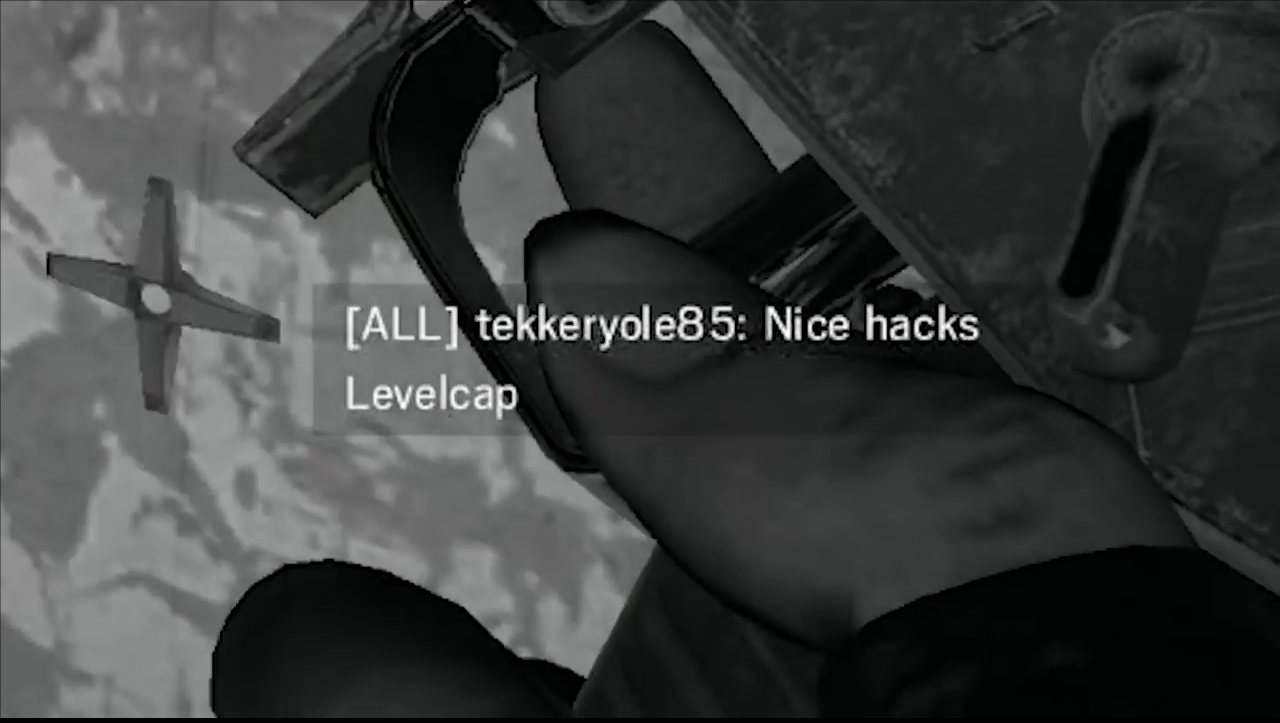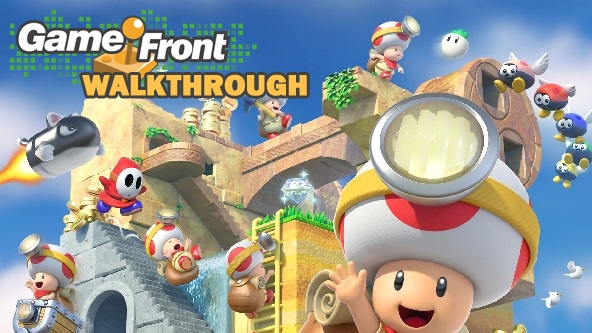

Gone Home has been out for about a month, and in that time a troubling discrepancy between its critical and public reception has revealed an interesting problem. For one, a lot of people don’t think Gone Home is a game. For these posters below, Gone Home isn’t just an easy game or a particularly passive game or a game they don’t like. To them, it’s not even a game. It’s something that has to be entirely excluded from the whole medium. And that’s a bit silly…
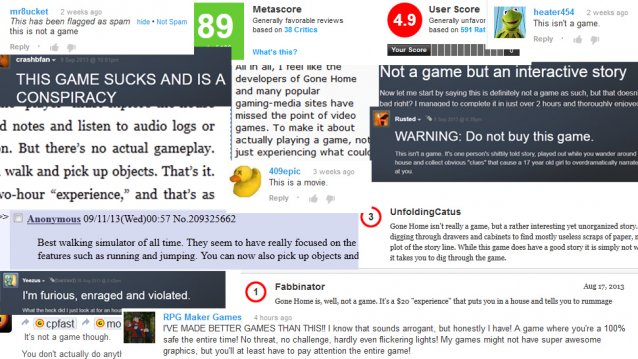
Posts like these are a shame, but they can tell us a lot. They tell us how different it is to review a game professionally as opposed to playing it for pleasure or how much their $20 is actually worth. But more than anything else, they tell us that some of the most vocal game-players out there still don’t really know what a game is supposed to be.
Those posts also tell us that they missed a whole second layer to Gone Home’s story. Underneath the surface-level narrative about teenage coming-out drama, Gone Home weaves an incredibly more complicated and subtle tale about the players themselves that sadly sailed right over a lot of people’s heads. Both layers of its story wouldn’t work in any other medium, but it’s that second hidden layer that thrives as a game. It takes everything we’ve come to expect and love about them and uses those elements to craft a self-aware arc out of the player’s own experiences and expectations.
Gaynor’s Proto-Game
Before embarking on the long-winded process of explaining how and why Gone Home is (believe it or not!) a game, I wanted to help the creators explain it themselves. Here’s a quote I grabbed from an email exchange the lead developer:
"I definitely think of Gone Home as "a game," since I have a very inclusive view of what a video game is. If it's a piece of interactive entertainment that you play on a screen, that's a video game. I don't know what value there is from saying that if something doesn't have traditional mechanics, or a win/lose state etc. that it "isn't a game." But that's because I don't really see a lot of value in the label in the first place. I think people who are saying this or that "isn't a game" are just looking for a way to dismiss it and say it's not valid generally, and that's the language they choose. Which I think is a shame. If you don't like it you don't like it, and if you do you do, and I doubt whether it is or isn't "a game" has very much to do with that."
Steve Gaynor, The Fullbright Company
Though I didn’t expect this debate to stick to Gone Home in particular, I think it’s fortunate that it did. Of all the abstract, passive “walking simulators” artgames out there Gone Home is easily be the most traditionally gamey of them all (if it even is one of them.) Gaynor’s quote may not even be critical enough of the opposition. The traditional mechanics, the winstates and the lose states are all there in Gone Home. They’re actually pretty obvious once you start looking for them.
A gamey texture
On top of its basic WSAD FPS-style interface, you have a design that dumps the player in front of an interactive environment that’s noticeably locked up. It’s a large, complex house full of clues that all relate to an overarching plot, and you can’t progress that plot without overcoming obstacles. You have to open locked doors, figure out safe combinations, and discover hidden compartments and secret rooms to reach the end.
All those 45-second gifs of people speedrunning the game are just that: speedruns. They’re dependant on meta-game knowledge that you don’t glean until your second playthrough. Oh, and they also have cheats turned on.
When not speedrunning or cheating, the house is carefully laid out to gently funnel you in the right direction without making it obvious where to go next. Every locked keyhole or combination is placed exactly next to the clues that deliver the biggest plot twists, turning points and revelations.
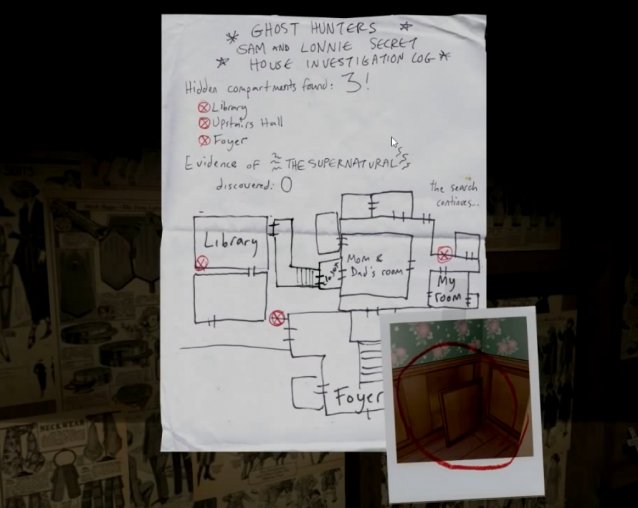
Explore until you find a key, backtrack to open a locked door, rinse and repeat. Sound familiar? It’s Resident Evil. Seriously, the level design shared between the Resident Evil mansion and the Gone Home house are so uncannily similar that I was having zombie-themed flashbacks by the minute. Fortunately Gone Home doesn’t inherit Resident Evil’s cheesy voice acting, laughable plot, tank controls or ridiculous sci-fi monsters thrashing after the player.
But wait, that’s right! Gone Home has no combat, no failstate. You can’t lose, so it’s not a game, right?
Then I guess Grim Fandango shouldn’t be considered a game, either. Or any one of those LucasArts adventure games. Or Sim game. Or even L.A. Noire, if lacking a failstate is the anti-game qualifier we’re looking for here.
Gone Home still has the same degree of choices familiar to any exploratory adventure, as well as the obligatory credits-rolling winstate and the bunch of expository artifacts that could constitute a failstate if missed. The house itself is an interactive system that responds to your inputs just like the systems in any other game, and it’s a surprisingly open-ended one. During my roomate’s playthrough, he completely missed one of the secret connecting cooridors and ended up having a very different experience than myself.
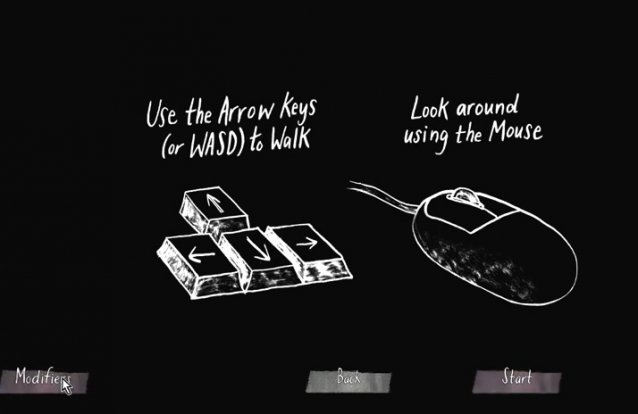
“Pictured: not a game, according to some”
That house has a realistic floorplan with hallways that loop around a central lobby which extends to two wings. Locked doors and tense choke points increase the time it takes to navigate this comparatively small space, and so does the steady flow of notes, models, wall paintings and other artifacts that keep the player stopping to study their surroundings. Once the level designer carefully places those artifacts in an order that establishes, develops and resolves a plot, then voila! You now have environmental storytelling! This is the exact same philosophy of level design that built Thief, Deus Ex, Bioshock, and pretty much any other “thinking man’s” FPS that no one has ever needed to qualify as a video game.
The greatest bit of misinformation may be on Gone Home’s own Steam page. “No Puzzles,” it boldly claims. “Gone Home is a nonviolent and puzzle-free experience, inviting you to play at your own pace without getting attacked, stuck, or frustrated.”
But puzzles are certainly there. They’re not difficult puzzles and they don’t require a lot of thought, but they’re at least there. Piecing together the scraps of paper in the secret compartments that lead to Sam’s locker combination, for example, is just one obstacle that taxes some of the most basic problem-solving skills that game puzzles muster. I remember Max Payne occasionally taking a break from its shooting to solve puzzles that were even easier.

When I made my own shamelessly glowing review of Gone Home, I seriously didn’t expect this whole anti-game debate to stick to the game, and I mentioned that in the review itself (I also agreed that $20 is an inappropriate price range for this sort of thing.) It’s just so much more interactive than its “walking simulator” contemporaries. I hate hearing comparisons with Dear Esther and Proteus because your hands and your brain are doing so much more in Gone Home. You have to move in more directions than just “forward,” you have to pick up physics objects, rotate them around and study them. You have to think about what you’ve read and comprehend where all those maps and clues lead you, and how they all relate to the plot. And the whole time, the exploratory gameplay never stops to reward the player with some uninteractive cutscenes. It’s just uninterrupted game, from start to finish.
The shocking twist is that there is no shocking twist.
And that uninterrupted game consistently teases a violent and supernatural twist up until the very end. Constant hints of a ghost haunting litter the notes. Flickering lights, chalked pentagrams and inexplicable noises echo through the house’s deliberately black hallways. It’s an outpouring of clues that ceaselessly lead the player into to believing that something spectral is lurking about.
But eventually you break into a locked-up attic and find out that nothing that shocking actually happened. There’s no ghost. No one killed themselves or anyone else. The most shocking twist is that there is no shocking twist. That this surprises you, the player, is the twist!
The reason the house is abandoned is because you just happened to arrive at a weird time in everyone’s life. The sister elopes with her lover and the parents are out on a couple’s retreat. The floorboards creak and the lights flicker because that’s what old houses do.
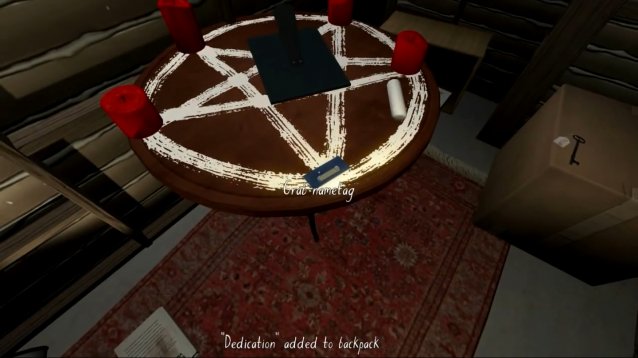
Sam leaves Ouji boards and pentagrams all over the place because she’s an impressionable teenager who’s into weird stuff, and you were probably into some embarrassing stuff at her age too. The most scandalous detail in this plot is that she happens to be a lesbian. But since we’re so used to games being about mutants, demons and aliens instead, that one fact is an almost shocking mini-twist of its own.
Why does this game’s lack of supernatural elements shock us? Why should its inclusions of LGBT issues shock us? Why is the fact that these revelations are shocking so shocking?
We expect people in video games to have video game people problems, not normal people problems. Gone Home very deliberately sets up a house full of haunted house clichés, and then pulls back its curtain to reveal something infinitely more “normal” and realistic. It begins with cliché and suspicion, and it uses that smokescreen to gently the lead the player into a story about heartfelt honesty that tells more about the players themselves than the characters in the game. The characters themselves are almost shocking in how typically excluded their normalcy is from games: complicated young women who aren’t space marines, sorceresses or tomb raiders.
The process of the game using those horror-game clichés to mislead the player adds a whole new meta-story the narrative, and that’s something that couldn’t have been done in any other medium. It’s a story about games that can only be processed by someone who’s used to playing games, someone who’s familiar with these clichés and can be effectively guided (and ultimately misguided) by them.
That faux horror-game theming, full of smoke and mirrors, is the device that makes its sentimental moments of honesty, nostalgia and compassion hit so hard. It works because it is a game, because whoever’s playing it is used to games and can pick up on the common things that games do. Being a game is critical to the experience and a vital part of the thing that Gone Home is, and if this story was told in any other medium then it wouldn’t of had so many layers. This kind of experience just doesn’t work any other way. It has to be a game.

